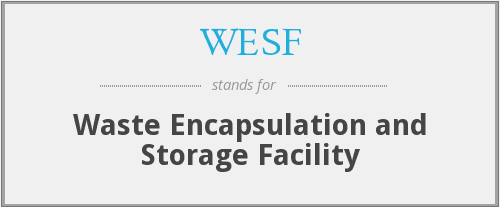Part 2 of 5 Parts (Please read Part 1 first)
To avoid the catastrophic failure of the cooling pools at the WESF, the DoE is working on transferring the capsules from the cooling pools to dry casks placed on an outdoor storage pad at Hanford. Sets of six capsules will be placed inside cylindrical metal sleeves. The air inside the cylinders will be exchanged for helium which will dissipate the heat generated by the capsules. The cylindrical sleeves will be inserted into a series of shielded canisters. The final vessel is an eleven-foot tall cylindrical cask made from a special steel alloy and reinforced concrete.
A passive cooling system will pull cool air into the casks and expel warm air. No fans or cooling water will be needed. The casks will sit vertically on the concrete storage pad. Eventually, there will be a total of twenty casks. Similar systems are used to store spent nuclear fuel at commercial nuclear power plants all over the U.S. The DoE has until the 31st of August 2025 to complete the work of transferring the capsules to the storage casks based on a legal agreement between the DoE, the State of Washington and the U.S. Environmental Agency.
When the transfer of the capsules is completed, the DoE projects that the new storage system for the capsules will save the U.S. over six million dollars annually in operating costs for the WESF. However, the new storage is only intended as a temporary measure. The capsules will remain in their dry storage casks for fifty years. When that time arrives, the capsules may be vitrified before they are buried in a deep geological repository that remains to be constructed.
Some analysts believe that the timeline for dealing with the capsules may be too ambitious. Last March at a Congressional hearing, DoE officials stated that treatment of the waste in the underground tanks had the highest priority at Hanford. The DoE also proposed that the annual budget for Hanford cleanup should be cut by seven hundred million dollars in fiscal year 2021. The DoE Office of Environmental Management has published a strategic vision for 2020 to 2030. In the published vision statement, the DoE says that the agency “will continue to evaluate” the transfer of capsules that are currently stored at the WESF.
The COVID-19 pandemic has caused further complications for the DoE plans at Hanford. The DoE now says that it “will be assessing potential impacts on all projects” that result from reduced operations at Hanford due to the pandemic. The FY2021 budget proposal calls for “safely” deferring work on the WESF capsule transfer project for one year. During that time, there will be “continued maintenance, monitoring, and assessment activities at WESF.”
It is not surprising that community leaders and state policy makers are opposed to the potential slowdowns and budget cuts at Hanford. They complain that the cleanup at Hanford has been going on for three decades and it should not be delayed any further. David Reeploeg is a member of the Tri-City Development Council (TRIDEC). He said that the DoE strategic vision and proposed budget cuts just add to the “collective frustration” at “this pattern of kicking the can down the road.” TRIDEC advocates for Hanford-related priorities in the nearby communities of Richland, Kennewick, and Pasco, Wash.
Please read Part 3 next
